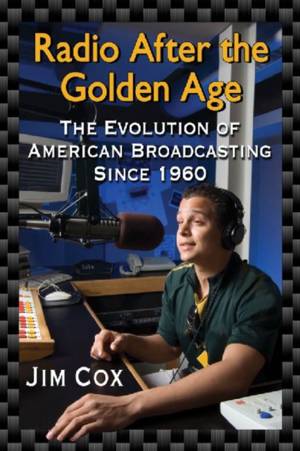
- Afhalen na 1 uur in een winkel met voorraad
- In januari gratis thuislevering in België
- Ruim aanbod met 7 miljoen producten
- Afhalen na 1 uur in een winkel met voorraad
- In januari gratis thuislevering in België
- Ruim aanbod met 7 miljoen producten
Radio After the Golden Age
The Evolution of American Broadcasting Since 1960
Jim CoxOmschrijving
What became of radio after its Golden Age ended about 1960? Not long ago Arbitron found that almost 93 percent of Americans age 12 and older are regular radio listeners, a higher percentage than those turning to television, magazines, newspapers, or the Internet. But the sounds they hear now barely resemble those of radio's heyday when it had little competition as a mass entertainment and information source.
Much has transpired in the past fifty-plus years: a proliferation of disc jockeys, narrowcasting, the FM band, satellites, automation, talk, ethnicity, media empires, Internet streaming and gadgets galore... Deregulation, payola, HD radio, pirate radio, the fall of transcontinental networks, the rise of local stations, conglomerate ownership, and radio's future landscape are examined in detail. Radio has lost a bit of influence yet it continues to inspire stunning innovations.
Specificaties
Betrokkenen
- Auteur(s):
- Uitgeverij:
Inhoud
- Aantal bladzijden:
- 264
- Taal:
- Engels
Eigenschappen
- Productcode (EAN):
- 9780786474349
- Verschijningsdatum:
- 30/09/2013
- Uitvoering:
- Paperback
- Formaat:
- Trade paperback (VS)
- Afmetingen:
- 152 mm x 229 mm
- Gewicht:
- 362 g

Alleen bij Standaard Boekhandel
Beoordelingen
We publiceren alleen reviews die voldoen aan de voorwaarden voor reviews. Bekijk onze voorwaarden voor reviews.









